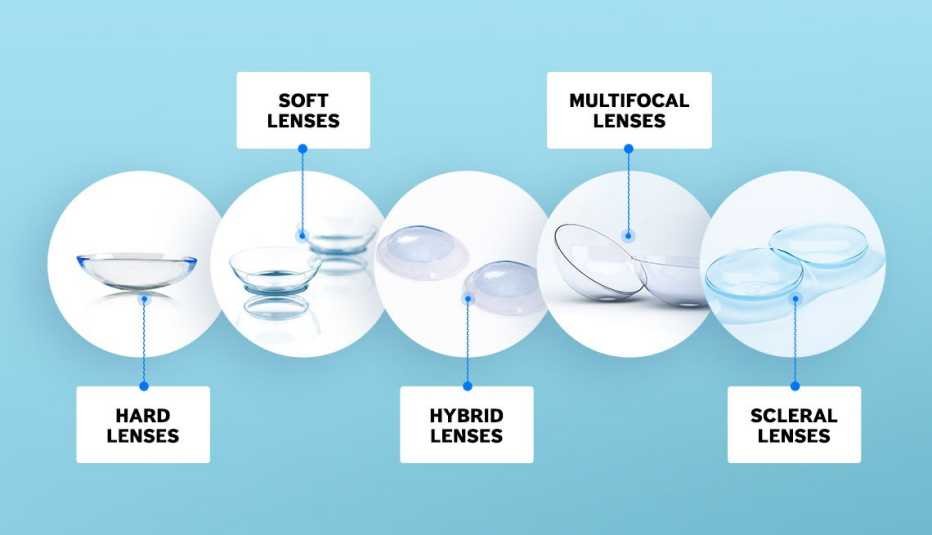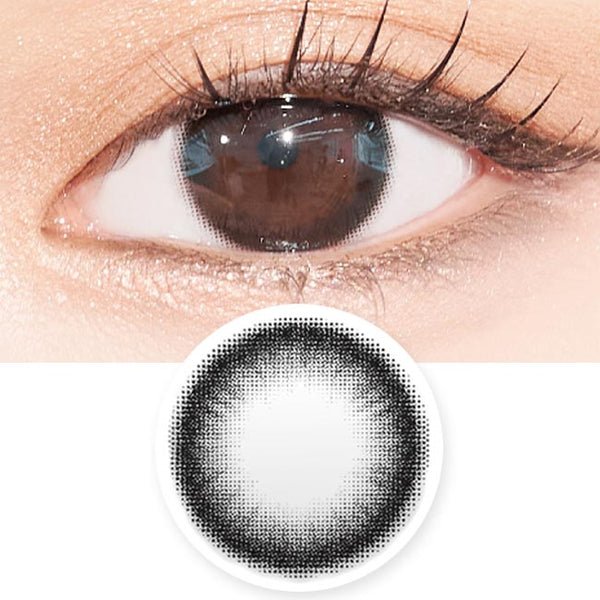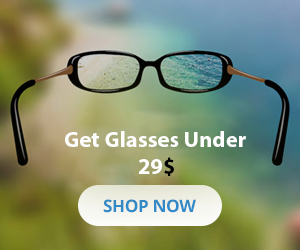Contact lenses are a common substitute for glasses. They offer an unobstructed view without the problem of frames. By placing contacts directly in the eyes, people can feel more at ease and free than they did previously. There are multiple types of contacts designed in the market with various modifications. All are created for specific reasons. Some congenital disabilities of vision, include myopic or hyperopic vision.
Others change the color of your eyes. Depending on the intended usage, some are for frequent use while others are for seldom use. As previously said, there are various types of contact lenses, and this article will cover their benefits and proper wear. This instruction is for both prescription and colorful lenses. You will find information on lens care and how to choose the best type for your needs.
Types of Contact Lenses

There are so many types of contact lenses. Each is designed to meet certain eye care needs. Below are the major categories of contact lenses.
Prescription Contact Lenses
Prescription contact lenses are the most commonly used. These are applied to treat vision disorders. People who have either nearsightedness, astigmatism, or farsightedness wear it. The shape of your eyes helps to make these prescriptions. Your eye doctor will determine the prescription. However, if you would like additional information on what our experts recommend, please continue reading.
Colored Contact Lenses
Cosmetic contact lenses change the color of one’s eyes. These are used to modify the natural colour of the eyes for aesthetic or theatrical purposes, particularly for Halloween. Contact lenses come in shades – blue, green, and brown. They are available to enhance a person’s own eye color or change it completely. Some colored contact lenses have prescription power. These allow those with particular visual issues to enjoy the effects of shifting colors while also correcting their vision.
Total 30 Contact Lenses

Total 30 contact lenses are silicone hydrogel lens types. They are intended for extended wear. You can use them for up to 30 days with the option of overnight use. Since oxygen can easily enter the eyes through the lenses, wearing it for the entire duration is not too painful. To avoid eye infections, you must ensure that you follow your eye doctor’s cleaning instructions.
Daily Contact Lenses
Daily contact lenses are used once. You wear them for one day and then take them off. Cleaning and setting them overnight is not necessary. Daily contacts are convenient and hygienic. They are the greatest, especially for individuals who dislike the concept of having to clean lenses. Additionally, since you are using a fresh one every day, they lower the risk of getting eye infections.
Toric Contact Lenses

Toric contact lenses are what is used by people with astigmatism. In contrast, astigmatism is a condition caused by an unevenly shaped cornea, resulting in blurred vision. Toric Contact lenses are designed to work to address this. They help provide clear, stable vision. These lenses are available in both daily and monthly types. Toric lenses come in both prescription and colored options.
Monthly Contact Lenses
These lenses have a lifetime of one month. After a month, you put on another lens. Monthly contact lenses are slightly less expensive than daily contacts. You should keep them clean and wash them on occasion to prevent bacteria from growing on them or turning bad. Many people like using extended-wear lenses because they are tough and affordable.
Progressive Contact Lenses
New contact lenses are for those who have to observe something near and something far. Progressive contact lenses combine many prescriptions into one lens. This lens allows the user to see close items with the lower portion and far-off ones with the upper portion. Progressive lenses are ideal for presbyopia, a disorder that develops as people age. They allow gradual variation of the power of the lens in question.
Advantages of Contact Lenses
Wearers of contact lenses have numerous benefits over the use of glasses. Some of them include comfort, convenience, and clearer vision.
- Clearer Vision – They sit right on the eye. This allows an extended field of view without any hindrance by the frames.
- No Fogging – Do not fog like glasses do. This makes it perfect for workouts or wearing a face mask.
- More Active Lifestyle – Contacts do not slide down your nose or fall off. They remain in place throughout sports and other sports.
- Better Appearance – Some people feel more confident wearing contacts. They do not have to worry about glasses affecting their appearance.
- Convenience – Contacts are lightweight and portable. You don’t need to have cases for your glasses or wipes for cleaning the screen.
- Cosmetic Uses – Colored contact lenses allow you to undertake eye looks and experiments.
How Much Are Contact Lenses?
Contact lenses vary in price. The type of lens, brand, and dealer all affect how much a contact lens costs.
- Prescription Lenses – The cost of prescription lenses is between $25 and $75 for any box. You can use one package for roughly a month. Daily lenses may be more expensive, costing around $30 to $60 per box.
- Colored Lenses – Color lenses cost as low as $20 and $50 for one pair. Other brands with higher prescriptions will be pricier.
- Speciality Lenses – Lenses such as Total 30 or progressive lenses start at around $100 or more per box. These lenses serve a specific purpose, such as extended wear or multi-focal vision.
Additional costs include solutions and cleaning products for reusable lenses. It’s important to check with your eye care provider for the total cost, including consultations and eye exams. Others, again, might have insurance that helps them pay for some of the expenditure.
Tips for Using Contact Lenses
Despite their convenience, contact lenses require some upkeep to perform correctly. Here you will find some helpful tips on how to avoid dangerous and deadly accidents when using them.
- Make sure you’ve cleaned your hands before touching your contact lens. This minimizes the possibility of touching one’s eyes through dirt and bacteria-ridden fingers.
- Regarding reusable lenses, make sure to clean them every day. Start using the proper lens solution to remove the deposit and avoid complications, and infection.
- When using daily lenses, do not wear them for more than one day. If you are using monthly lenses, then do not wear them for more than one month. Durative use of lenses may also lead to soreness of the eyes and itching.
- Do not wear lenses beyond their recommended usage period. This helps avoid eye infections and discomfort.
- When not in use, store lenses in their case with fresh solution. Never store them in water.
- You should not sleep with your lenses even if you have extended wear contact lenses. This can actually minimize oxygen circulation to your eyes which may lead to their irritation.
- You may have dry eyes when using contact lenses, opt for using lubricating eye drops. This will aid in increasing comfort not causing harm to the lenses.
- One should get routine eye exams to confirm the prescription details and ensure that their eyes are in good health.
Conclusion
Contacts are excellent for people who do not wish to wear glasses for clear vision. However, contact lenses are a preferable option. They include pump, component, slide, and center discharge varieties, and you are sure to find one that meets your demands. Lenses can be useful because then one gets better vision and comfort with a plus of convenience. They allow people to be more active and confident in their lifestyle. It is important to use and maintain these easily and safely. When deciding on the right lenses for you, always consult with your eye care provider.



